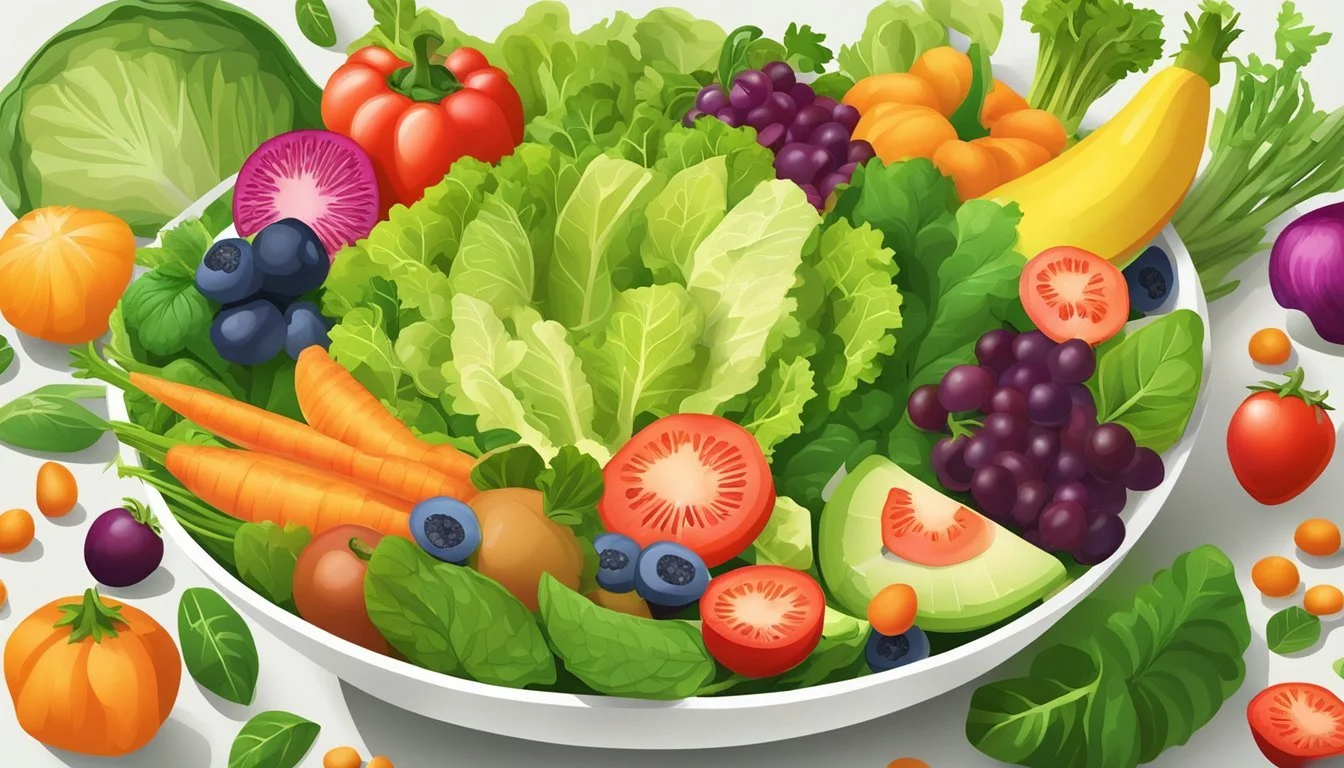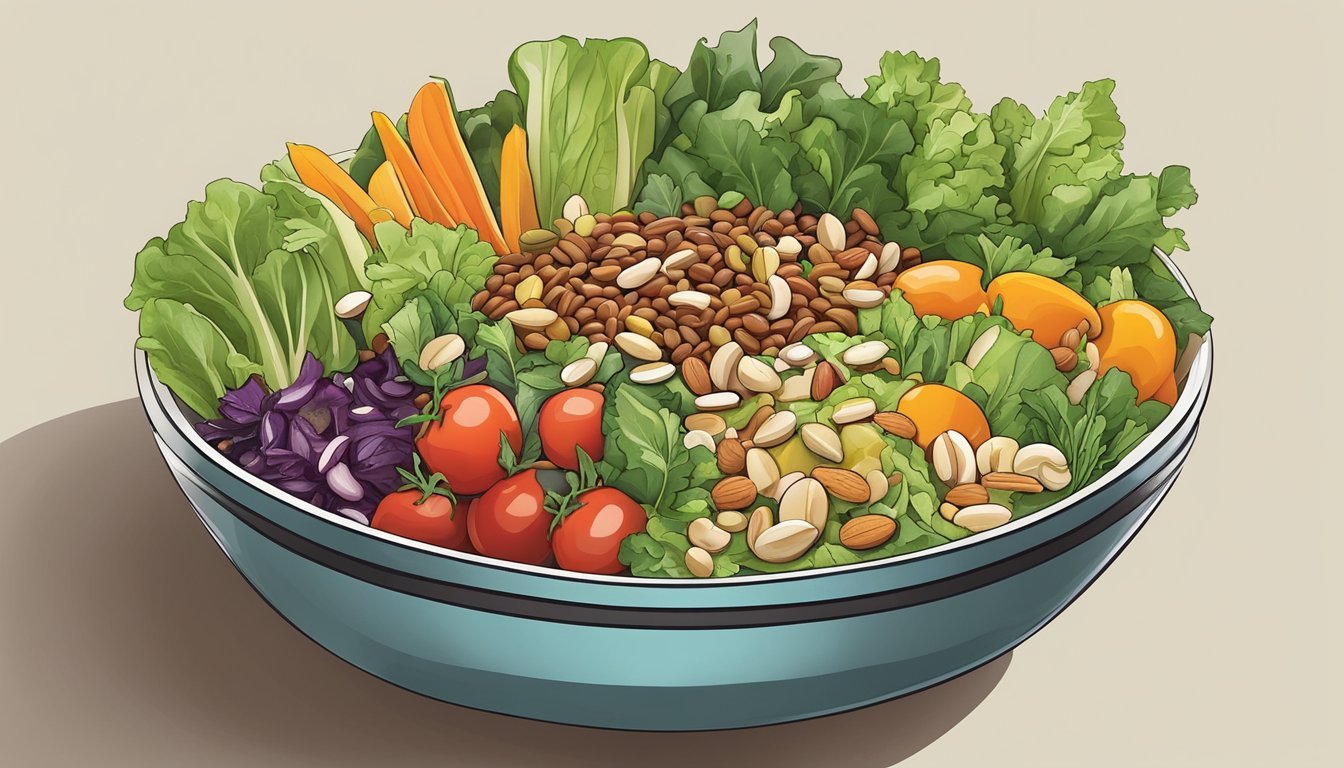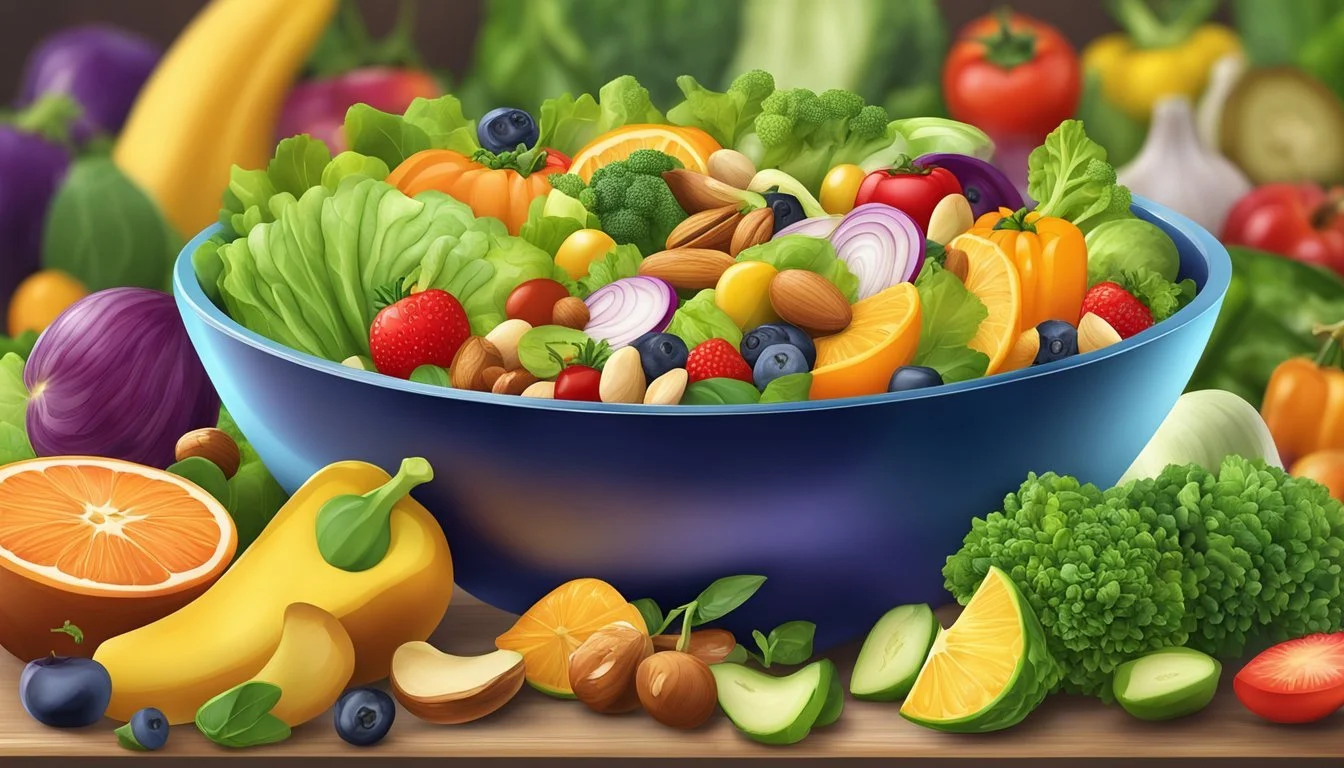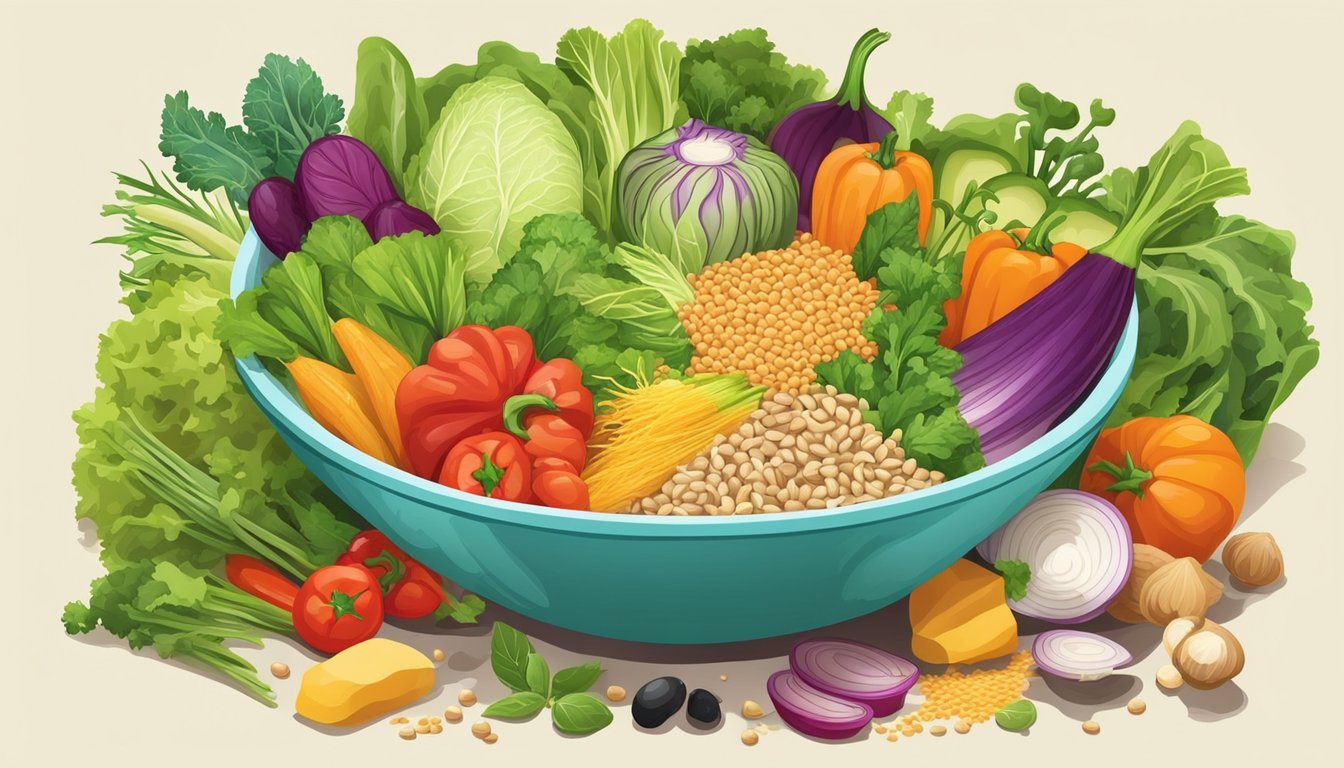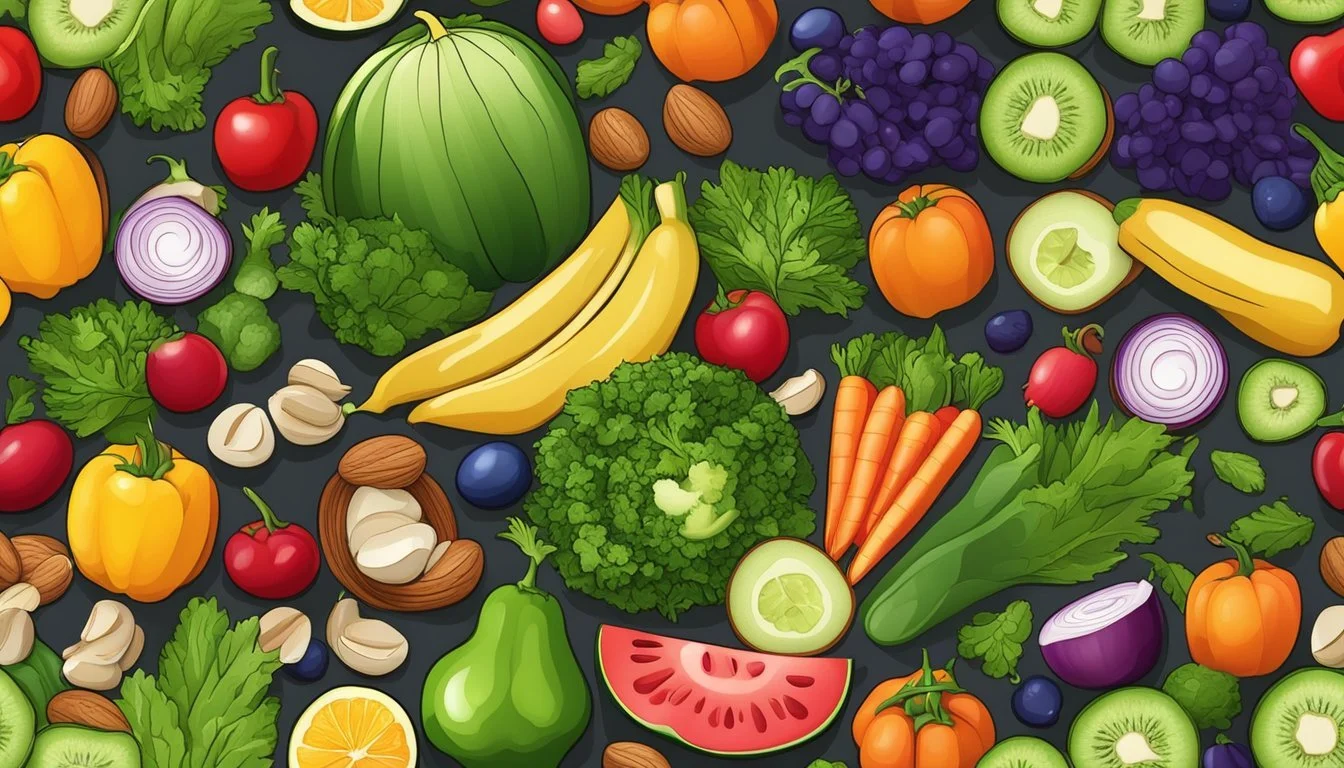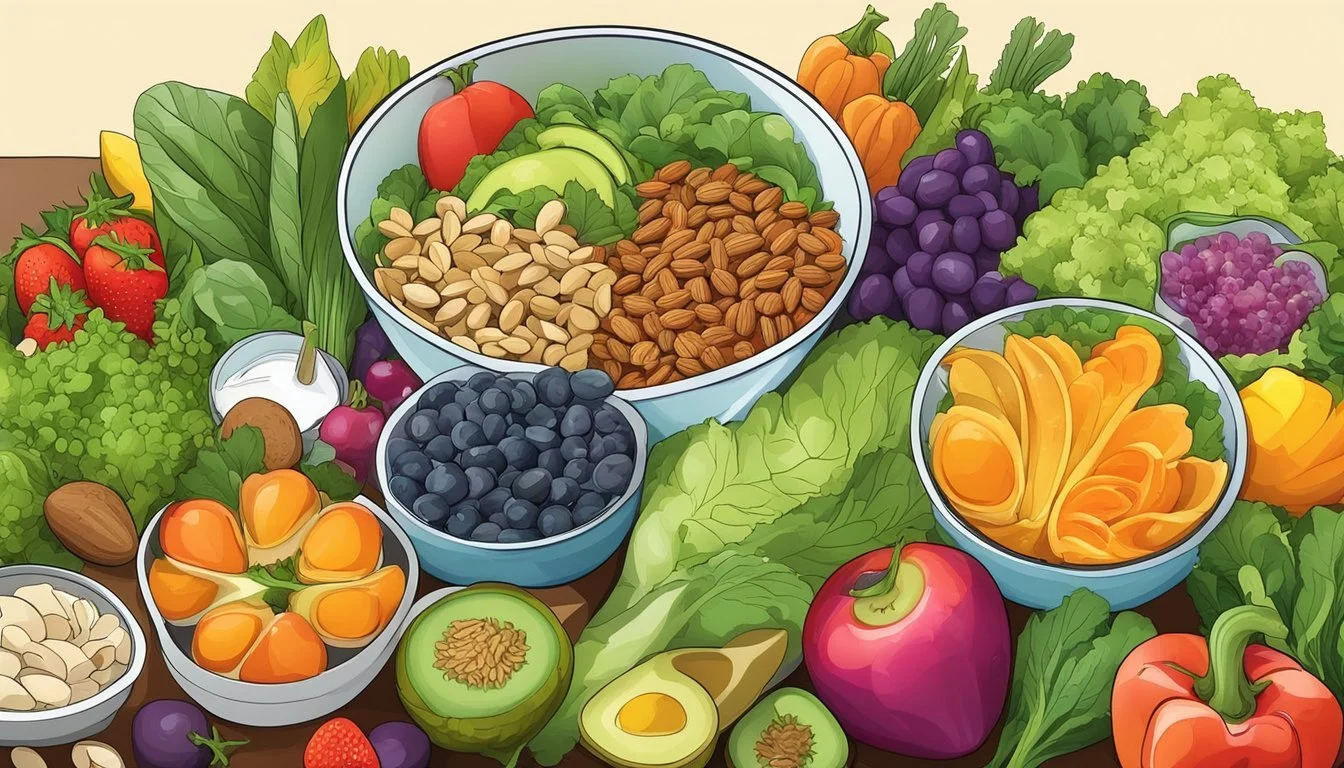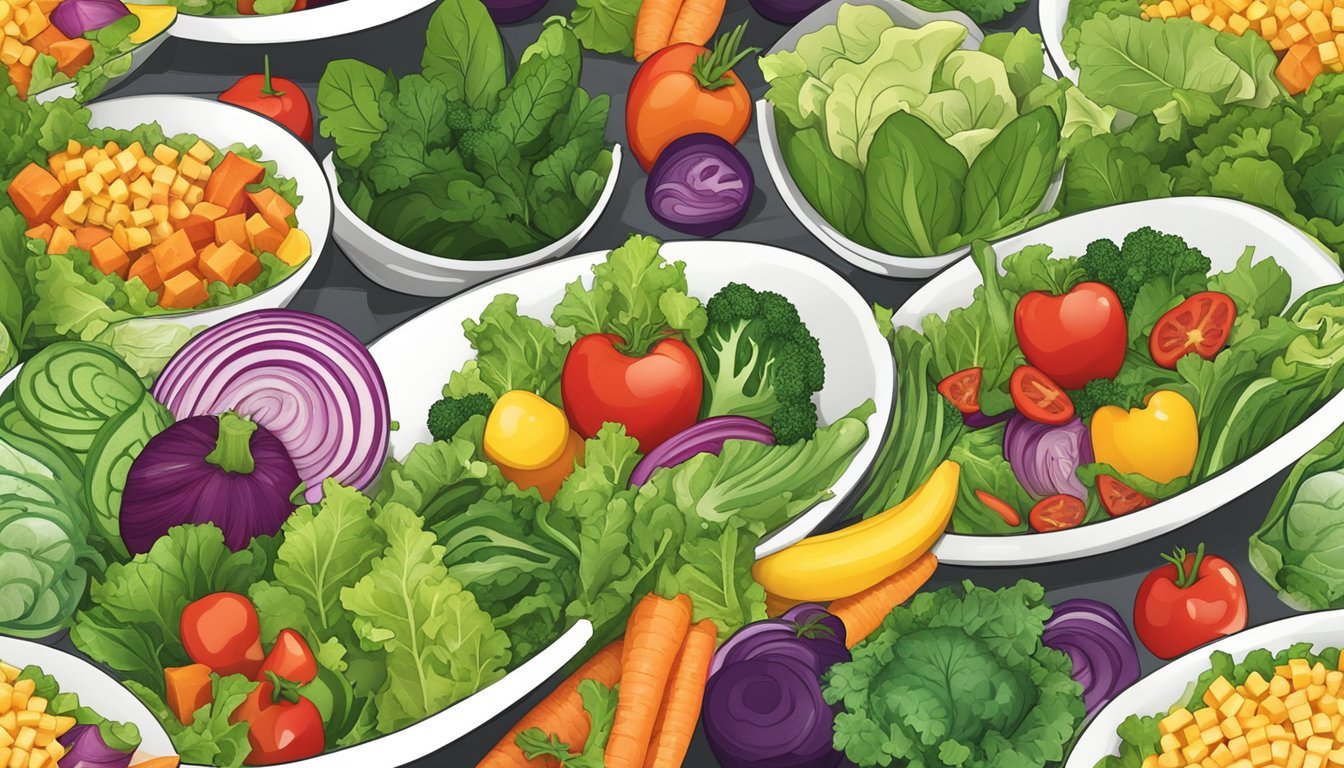Best Foods for a Healthy and Satisfying Salad Bowl
Key Ingredients for Nutrient Balance
Salad bowls are a staple for individuals seeking both nourishment and flavor in a single dish. These bowls provide a canvas for a variety of textures and tastes, ranging from the earthiness of greens to the creaminess of dressings, and the crunch of nuts or seeds. They are highly customizable, allowing one to cater to personal dietary needs and preferences while ensuring the intake of essential nutrients. The key to crafting a satisfying salad bowl lies in balancing the ingredients to create a harmonious and healthful meal.
When constructing a salad bowl, the base often starts with leafy greens such as spinach, kale, or mixed lettuces, which offer a rich array of vitamins, minerals, and fiber. To this foundation, one can add an assortment of vegetables like cucumbers, tomatoes, and peppers, contributing vibrant colors and additional nutrients. Incorporating a protein source such as grilled chicken, tofu, or beans is vital for satiety and muscle repair, making the salad bowl a complete meal.
The finishing touches to a salad bowl come from a selection of healthy fats, such as avocados, olives, (What wine goes well with olives?) or nuts, which provide a satisfying mouthfeel and energy. Dressings and herbs add a final layer of flavor, with choices like olive oil and lemon juice or balsamic vinegar complementing the dish without overpowering it. A well-composed salad bowl is not only a testament to the possibilities of plant-based eating but also a testament to how wholesome ingredients can come together to create a truly satisfying meal.
Essential Components of a Salad Bowl
Crafting the perfect salad bowl melds nutrition and satisfaction through the careful selection of its components. Each layer should complement the others, achieving a balance of texture, flavor, and health benefits.
Choosing the Right Bowl
Size matters: Opt for a large bowl to allow adequate space for the mixing of ingredients. A shallow bowl can also facilitate an even distribution of flavors and textures across the greens and toppings.
The Foundation: Selecting Your Greens
Variety is key: Incorporate a mix of greens such as kale, spinach, arugula, and mixed lettuce for a diverse nutrient profile. Kale and spinach are nutrient-dense options providing a solid vitamin base, while arugula adds a peppery note.
Adding Substance with Proteins
To give the salad staying power, include high-quality proteins. Grilled chicken, tofu, chickpeas, or boiled eggs offer both flavor and substance. For a vegan choice, consider black beans or lentils.
Incorporating Whole Grains
Grains contribute texture and fiber. Add a scoop of quinoa, (What wine goes well with quinoa?) brown rice, or other wholesome grains like farro and barley. They absorb dressings well and pair nicely with an array of vegetables.
Variety of Vegetables
Layer in tomatoes, onions, carrots, corn, and cucumbers for a colorful and crunchy profile. Roasted veggies like butternut squash or red peppers can add both sweetness and depth.
Healthy Fats for Satisfaction
Incorporate avocado slices or kalamata olives for heart-healthy fats. Nuts such as walnuts or hemp seeds can also provide texture and essential fatty acids to enhance satiety.
Boosting the Flavor
Dressings and herbs are the heart of flavor. Drizzle extra virgin olive oil mixed with lemon juice, or whisk in Dijon mustard or tahini sauce for an emulsified, flavorful dressing. Cilantro or parsley contributes fresh notes.
Specialty Ingredients
Finish with curated additions for that gourmet touch. Crumbled feta or goat cheese lends creaminess, while vegan falafel adds a satisfying crunch. Delicate herbs or a hint of citrus zest can also elevate your salad experience.
Salad Dressings and Sauces
The art of elevating a salad lies in the dressing or sauce, which can transform simple greens and vegetables into a symphony of flavors. A well-crafted dressing not only provides moisture but also binds the salad components together, creating harmony on the palate.
Classic and Simple Dressings
Ingredients for a classic Italian vinaigrette are fundamental: olive oil and red wine vinegar—often in a 3:2 ratio—plus seasonings like garlic powder, dried herbs, and a bit of Dijon mustard for an emulsifying effect. The simplicity of lemon juice whisked with olive oil, laced with salt and pepper, lends a bright and zesty character to salads (What wine goes well with salads?) without overshadowing the taste of the fresh produce.
Ingredient Role Example Usage Olive Oil Base and smoothness 3 parts in vinaigrette Vinegar Acidity and sharpness 2 parts in vinaigrette Lemon Juice Freshness and a citrus hit Dressing base or to taste Dijon Mustard Emulsifier and flavor 1 tablespoon per cup of oil
Innovative Dressing Recipes
One has myriad options to get creative with dressings. For instance, a Chili Lime Vinaigrette introduces a kick with citrus notes, suitable for a salad with a southwestern twist. Tahini sauce, made from sesame paste, can be the base for a rich, nutty dressing, well complemented by lemon juice and perhaps a touch of maple syrup for sweetness. Another trend is using pureed fruits, such as persimmons in a Maple Vinaigrette, adding natural sweetness and unique flavor profiles to the dressing mix.
Chili Lime Vinaigrette: Chili for heat, lime juice for tang
Tahini Sauce: Sesame paste base, customizable with citrus or sweeteners
Maple Vinaigrette: Features pureed fruit for a distinctive sweet element
Tips for Dressing Your Salad
The technique of dressing a salad is just as pivotal as the composition of the dressing itself. A fundamental tip is to add the dressing at the very last moment before serving, ensuring that the salad remains crisp and not wilted. One should also consider the weight of the dressing relative to the ingredients in the salad — leafy greens pair best with light vinaigrettes, while heartier components like roasted vegetables (What wine goes well with roasted vegetables?) welcome thicker, creamier sauces. Finally, always taste as you go. The amount of dressing needed can vary vastly depending on the salad's components and personal preference for flavor intensity.
Timing: Add dressing right before serving
Pairing: Match dressing weight with salad ingredients
Tasting: Adjust the dressing volume and seasoning to taste
Creative Salad Bowl Variations
Exploring diverse ingredients and flavors is key to crafting both satisfying and nutritious salad bowls. Whether one adheres to a specific diet or seeks culinary adventure, the options for crafting a unique bowl are limitless.
Vegetarian and Vegan Options
Vegetarians and vegans can rejoice in a plethora of plant-based proteins to choose from. Vegan falafel made from chickpeas is a hearty add-on, bringing both texture and protein to a bowl layered with leafy greens and vibrant vegetables. Tofu is another excellent protein source that absorbs the flavors of the bowl. A Mediterranean-inspired bowl could feature greens like spinach or arugula, accompanied by falafel, hummus, and tabbouleh salad, a tangy mix of parsley, tomatoes, and bulgur wheat — ensuring a diverse intake of plant-based nutrients.
Grain-Free and Gluten-Free Choices
Those who prefer grain-free or gluten-free diets can opt for bowls that highlight other satisfying elements. Quinoa, a nutritious and protein-rich pseudo-grain, is naturally gluten-free and serves as a fantastic base for any bowl. Another option is to use shredded cauliflower as a substitute for rice, which not only reduces carbohydrate intake but also ups the intake of cruciferous vegetables. For instance, burrito bowls can blend quinoa or cauliflower rice with black beans, corn, avocado, and a squeeze of lime, making them robust and flavorful.
International Inspiration
Salad bowls can take one on a culinary journey around the world. Mediterranean bowl options often sport ingredients like olives, feta, cucumbers, and a drizzle of extra virgin olive oil. Asian-inspired bowls might include noodle bowls with soba or rice noodles, topped with edamame, shredded carrots, cucumbers, and a sesame-soy dressing. Each of these variations not only satisfies the palate but also incorporates a balanced spectrum of nutrients.
Preparation and Assembly Techniques
Crafting the perfect salad involves more than just tossing ingredients into a bowl; it requires thoughtful preparation and assembly techniques to enhance the eating experience. Here's how one can build a salad that is both flavorful and satisfying.
Layering for Optimal Enjoyment
Layering ingredients ensures that each forkful contains a medley of flavors and textures. Start with a base of greens, add a variety of chopped vegetables for color and crunch, then incorporate protein like grilled chicken or boiled eggs. For those who plan to eat the salad as leftovers, store more delicate items such as avocados or cheese separately to maintain their integrity.
Balancing Textures and Flavors
A well-balanced salad should contain elements that are crunchy, creamy, sweet, and savory. Seeds and nuts can add a crunchy contrast to soft lettuces, while a creamy dressing or soft cheese can round out the crispness. To make every bite flavorful, consider a recipe with complementary ingredients, such as sweet fruits with tangy vinaigrette or bitter greens with a sweet honey dressing.
Maximizing Freshness and Longevity
For those preparing salads in advance, keeping ingredients fresh is paramount. Use a salad spinner to remove excess water from the greens to prevent sogginess. Additionally, store dressings and wet components like tomatoes separately, adding them just before serving to ensure the salad remains vibrant and appealing. This technique also aids in prolonging the freshness of the salad, avoiding a limp and unappetizing mix.
Health Benefits and Nutritional Considerations
Crafting a salad bowl is an art that balances nutrition and satisfaction. This section explores the nutritional profile, includes dietary accommodations, and indicates the role of salads in a balanced diet, focusing on health benefits tied to essential nutrients.
Understanding the Nutritional Profile of Salads
Salads can provide a diverse array of nutrients, making them a staple for a healthy diet. They are often high in fiber, which aids in digestion and can contribute to a feeling of fullness. Moreover, salads can be an excellent source of protein when they include ingredients like chicken, fish, legumes, or tofu. Key vitamins and minerals are typically abundant in a variety of vegetables and fruits commonly used in salads.
Dietary Accommodations
A salad's versatility allows it to be customized to meet various dietary needs:
Vegetarian and Vegan: By excluding animal products and incorporating plant-based proteins such as beans, nuts, or quinoa, salads can fulfill vegetarian and vegan dietary requirements.
Gluten-Free: Salads are intrinsically gluten-free if one avoids croutons or dressings containing gluten, making them an ideal choice for those with celiac disease or gluten sensitivity.
Healthy Fats: The inclusion of healthy fats, like those found in avocados or olive oil, can enhance nutrient absorption and contribute to heart health.
The Role of Salad in a Balanced Diet
Salads can act as a nutrient-dense choice for lunch or any mealtime, supporting a balanced diet. They are typically low in calories but high in nutrients, which aligns with dietary guidelines for maintaining a healthy weight. Adding a rich variety of colorful vegetables, lean proteins, and whole grains ensures a comprehensive intake of essential nutrients, making salads an integral part of a healthy eating plan.
Innovative Ideas for Leftovers
Leftover ingredients offer a unique opportunity to create nutritious and satisfying salad bowls. With a bit of creativity and proper storage techniques, one can transform yesterday's meals into today's gourmet experience.
Transforming Salad into a New Meal
Ingredients from previous meals can be the foundation for a new and exciting dish. A salad bowl can simply become a burrito bowl with the addition of a grain such as rice or quinoa, beans for protein, and a zesty dressing. Consider repurposing roasted vegetables or grilled protein by cutting them into bite-sized pieces and tossing them into greens. For a more substantial meal, add a leftover whole grain or pasta.
Grains: Add brown rice, farro, or quinoa.
Proteins: Incorporate shredded chicken, diced tofu, or black beans.
Dressings: Brighten flavors with lime juice, or blend a quick vinaigrette.
Proper Storage Techniques
Storing leftovers correctly is crucial to maintaining their freshness and safety. Ensure that leftovers are sealed in airtight containers and refrigerated promptly. Use clear containers or label them with the content and date to keep track of what's available for your salad creations. If they are to be repurposed in a burrito bowl, keep components like rice and beans separate to avoid sogginess and preserve flavors.
Temperatures: Refrigerate at or below 40°F (4°C).
Containers: Airtight and clear containers or properly labeled.
Organization: Keep newer leftovers behind older ones to use them in rotation.
Conclusion
Creating a healthy and satisfying salad bowl is a simple way to cater to one's dietary preferences and nutritional needs. A well-constructed salad bowl should be a harmonious blend of macronutrients – proteins, carbohydrates, and healthy fats – alongside a diverse range of vitamins and minerals from various vegetables, fruits, and added toppings.
Protein is essential for muscle repair and satiety. Plant-based proteins such as lentils, chickpeas, and quinoa are excellent choices. For those preferring animal protein, grilled chicken or baked tofu can provide a lean, satisfying option.
Carbohydrates should come from vegetables and whole grains. Sweet potatoes, leafy greens, and a base of brown rice or quinoa not only add texture but also valuable fiber and nutrients.
Healthy fats are crucial for nutrient absorption. Ingredients like avocado, nuts, seeds, or a drizzle of extra virgin olive oil contribute monounsaturated and polyunsaturated fats that support overall health.
Finally, the dressing is more than a flavor enhancer; it's an opportunity to introduce probiotics, antioxidants, and additional nutrients. Whether it's a tangy lemon vinaigrette or a creamy yogurt-based sauce, the dressing can elevate the taste and nutritional profile of the salad bowl.
A splurge of creativity and mindfulness in selecting ingredients can transform a simple salad bowl into a nutritious and fulfilling meal that supports well-being and satisfies the palate.
Additional Resources
When crafting a healthy and satisfying salad bowl, individuals often seek inspiration and guidance to ensure a variety of nutrients and flavors. The following resources can provide valuable information:
Cookbooks: A vast array of cookbooks dedicated to salads and bowls offer detailed recipes and nutritional insights. Look for titles with a focus on balanced meals and wholesome ingredients.
Websites and Blogs: Health-oriented websites and culinary blogs are treasure troves of salad recipes. For reputable advice, choose sites that emphasize nutrition science and culinary expertise.
Nutrition Apps: Apps such as MyFitnessPal and Cronometer can help track the nutritional content of your salad ingredients, ensuring a well-rounded meal.
Cooking Classes: Local cooking classes or online workshops specializing in healthy meal prep can offer hands-on experience and professional tips.
Dietitians and Nutritionists: Consulting a certified dietitian or nutritionist can provide tailored advice based on dietary needs and preferences.
Type of Resource Description Notable Benefit Cookbooks Recipes and nutritional guidance In-depth meal planning Websites and Blogs Recipe variety and expert advice Access to the latest trends Nutrition Apps Tracking of nutritional intake Personalized nutritional analysis Cooking Classes Professional instruction and skills enhancement Practical learning experience Dietitians Individualized consultations, meal planning, and adjustments to diet requirements Customized health solutions
By leveraging these resources, one can enhance their knowledge and creativity for assembling nutritious salad bowls that are both healthy and satisfying.
About the Author
The author of "Best Foods for a Healthy and Satisfying Salad Bowl" brings a wealth of experience to the table. She is a professional nutritionist with a degree in Dietetics and a strong background in health-focused culinary arts. Her passion lies in creating nutritious, balanced, and appetizing meals that cater to a variety of dietary needs.
Her approach to salads is both scientific and creative, ensuring that every bowl is a harmonious blend of macronutrients, vitamins, and minerals. She emphasizes the importance of incorporating a wide spectrum of textures and flavors to transform salads from a mundane meal option to a culinary adventure.
Experience and Expertise:
Bachelor of Science in Dietetics
Certified Nutrition Specialist
10+ years of experience in health-conscious recipe development
Philosophy:
Salads as a cornerstone of a balanced diet
Use of fresh, seasonal produce
Innovation in flavor pairings and dressings
Throughout her career, the author has contributed to various health magazines, hosted cooking workshops, and consulted for food service providers on menu design. Her expertise is often sought after by those looking to improve their eating habits or to understand the synergy between good food and overall well-being.
Each recipe crafted by the author is a testament to her commitment to quality and her belief that a great salad bowl is more than just a side dish; it's a nutrient-packed, satisfying meal that supports a healthy lifestyle.
References
A variety of sources provide insights into creating nutritious and satisfying salad bowls. They emphasize the importance of combining flavors and textures to achieve balance. Here is a summary of references from trusted culinary websites:
The Mediterranean Dish offers a recipe for a Mediterranean Bowl highlighting ingredients like quinoa and hummus, dressed with extra virgin olive oil, and seasoned with ground sumac and lemon juice, which contribute to both flavor and health benefits.
Minimalist Baker presents a guide to crafting nourishing bowl meals that include plant-based ingredients such as sweet potatoes and lentils. These ingredients are not only hearty but also packed with essential nutrients.
Everything Zoomer specializes in providing tips for healthy eating for a mature audience. In their recipe selection, they feature a salad bowl recipe that incorporates chicken coated in a sauce with Asian flavors like soy sauce, honey, and ginger.
That Salad Lady offers an ultimate salad bowl recipe with diverse components, including mixed vegetables, fruit, candied nuts, and avocado for healthy fats. With an oven set to 350 degrees F, the nuts are 'candied' to perfection, adding a sweet crunch to the bowl.
When compiling a salad bowl, it's essential to balance macronutrients, flavors, and textures. The references provided are beneficial for individuals seeking to create wholesome and palatable salad bowls. They emphasize the utility of various components and dressing options that enhance both the taste and nutrition profile of the meal.

